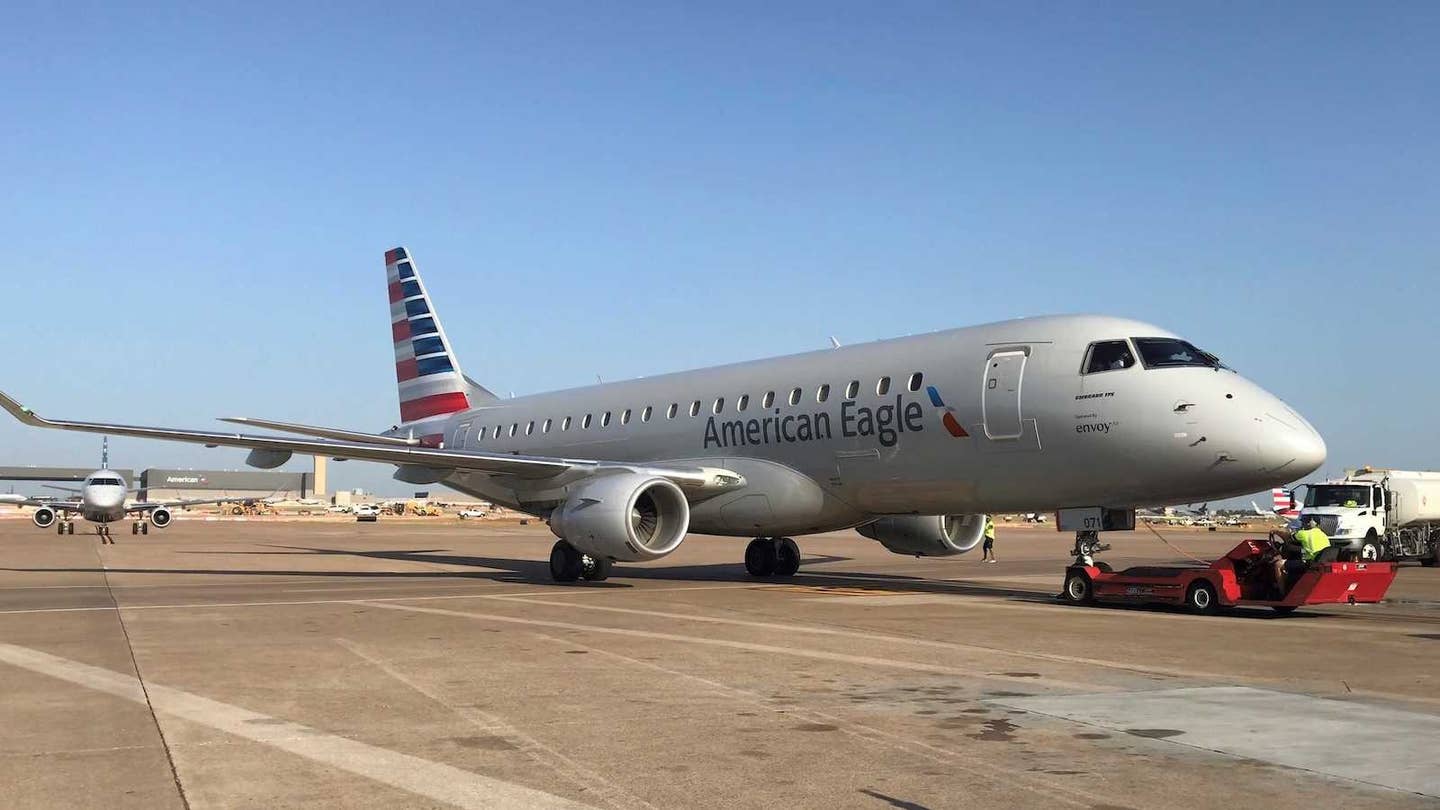
On Christmas night, 2006, it was foggy in Lawrenceville, Georgia. Briscoe Field was reporting half a mile visibility in fog, with the ceiling at 100 feet, when a Cessna 414A arrived from Florida on an instrument flight plan.
The 44-year-old commercial pilot had logged over 400 of his 632 hours in the airplane in which his life and those of his two passengers were shortly to end. His actual instrument time was 26.4 hours, his simulated instrument time 56.3. He had logged 142 hours at night. He was comparatively inexperienced, but current, qualified and legal. Despite the festive date he was not, as toxicology tests would later establish, under the influence of alcohol.
As the pilot approached Lawrenceville the controller advised him of the weather, which was below the airport minimums of 200 and one half. The pilot elected to attempt the ILS Runway 25 approach, as he was entitled to do: The criteria for landing are expressed in the FAR as "flight visibility," because it is understood that what the pilot sees on final approach is not necessarily the same thing as is seen from the tower or from some other weather observation point. The pilot is on his honor not to descend below the minimum altitude unless he has the runway or its lights in sight.
The pilot missed the approach; but he reported to the controller that he had caught sight of the airport as he passed over it and wanted to try again. The controller vectored him back around to the approach course and repeated the current weather conditions.
On the second approach, the tower advised the pilot that he was drifting to the left of the extended runway centerline. The pilot acknowledged. Shortly after, the tower controller saw a bright orange glow beside the approach end of the runway. He tried without success to contact the 414. It had crashed into an asphalt plant, clipping the tops of trees and striking a gravel berm before eventually coming to a stop 1,100 feet south of the runway, heavily fragmented, amidst the machinery of a rock crusher.
The NTSB neatly, if unhelpfully, summed up the probable cause: "The pilot's failure to follow the instrument approach procedure [and his] descent below the prescribed decision height altitude."
This is the kind of accident that the newspapers will describe with some such phrase as, "The airplane crashed while attempting to land in fog." The image conveyed to the lay reader is of the pilot feeling his way toward the airport and inadvertently bumping into something, just as a driver, creeping forward in dense fog and darkness, might, in a moment of divided attention, collide with an inconveniently situated tree.
To an instrument pilot, the picture is more complex. An instrument approach is not a matter of feeling one's way. It is a mechanical procedure which, if executed rigidly, will end either in a safe landing or in a safe abandonment of the attempt. It goes without saying that if you follow the instrument approach procedure to the letter, you will not hit the ground. So how does it happen that pilots, even ones flying precision approaches in which both altitude and lateral position are continually displayed, so often crash in the vicinity of the approach end of the runway, particularly at night?
You seldom learn exactly what happened on a particular flight -- unless the pilot survives -- but you can imagine a plausible scenario. On the first approach, the pilot stops descending at the decision height and overflies the runway. Looking down, he glimpses the runway lights, and possibly, if the fog is spotty enough, even discerns illuminated features on the ground -- a pool of light around a windsock or in front of a building, airplanes parked on the ramp. After all, these things are only 200 feet away, and the visibility under the overcast is half a mile. It appears that with a little luck he ought to be able to land. So he comes around for another try.
But there is a big difference between vertical and slant visibility. The conditions are reported as 100 and a half -- round numbers. Looking straight down, one is separated from objects on the ground by, at most, 100 feet of cloud and another 100 feet of moderate fog. It is easy to see lights through that much fog -- easier, in fact, than to discern surface features in daylight. But a standard three-degree glidepath has a slope of nearly 20:1. To see the same lights ahead of the airplane would require looking through 2,000 feet of cloud and another 2,000 feet of fog. The same principle applies here as applies to the ground fogs that sometimes form in otherwise clear weather. It may be possible to see an airport clearly from above through a thin layer of ground fog; but if you try to land you find yourself suddenly blind in the critical final instants of the approach and flare. Looking straight down and looking straight ahead are two quite different things.
But the glimpse of the lights subtly alters the pilot's behavior. He knows that he just has to get close enough to the bottom of the overcast to pick up the first few runway lights, and he'll be okay. He's already glimpsed the lights. He's almost there.
The second try is the dangerous one. He now knows how tantalizingly close his destination is, and the urge to descend just slightly below decision height -- to violate his pact of honor with the system, but only by a little -- is very strong. His passengers know too; they have seen the lights sweep past the windows, they expect that they will soon be on the ground. The arcana of minimums and decision heights are beyond them; they just know that this big, expensive, pressurized airplane and its instrument-rated pilot are going to get them home.
Because the successful completion of the approach requires visual contact with the runway environment, the pilot is now obliged to divide his attention between the instrument panel and the windows. This is not the ideal way to fly an ILS to minimums. In principle, the pilot's attention should be on the instruments, and the instruments alone, until he has either broken out of the clouds or has almost reached decision height. At this point he looks outside. If he sees the runway or the approach lights, he lands; if not, he misses.
But fragmentary visual cues before decision height confuse the matter. The final approach to Runway 25 at Lawrenceville is unobstructed, but one reaches decision height three-quarters of a mile from the touchdown point and still far from the approach lights. One passes over a divided highway and alongside a railroad yard with a large, illuminated parking lot. It is not hard to imagine that in the same way that some drivers whose attention is diverted by a car parked on the shoulder of the road unconsciously veer toward it, a pilot searching for lights on the ground might unconsciously drift toward the large lighted area of the train yard, which lies like a magnet just to the left of the final approach course and barely half a mile from the threshold.
What has happened in this situation is that emotion has entered into the picture, and the pilot has exchanged the role of the robotic executor of a mechanical operation for that of the newspapers' baffled motorist poking his way through pea-soup fog. The ILS cross-pointers are drifting awry, but the pilot is no longer looking for needles; he is looking for lights.
The pilot acknowledged the tower's warning that he was left of course; but by then he was already too low and too far from the localizer. Lawrenceville has medium-intensity approach lighting without sequenced flashers. Perhaps he mistook a light on the asphalt plant for an approach light. On a three-degree approach at 100 knots, 16 seconds elapse between a 200-foot decision height and the top of a 50-foot tree. Sixteen seconds sounds like a long time, and feels long when you're sitting in an armchair looking at the second hand on your watch. But for a pilot hoping for a gift on a Christmas night approach to minimums, torn between doing the right thing and descending just a little bit lower, it may not be enough time to change his mind.
This article is based on the National Transportation Safety Board's report of the accident and is intended to bring the issues raised to the attention of our readers. It is not intended to judge or to reach any definitive conclusions about the ability or capacity of any person, living or dead, or any aircraft or accessory.

Sign-up for newsletters & special offers!
Get the latest FLYING stories & special offers delivered directly to your inbox






